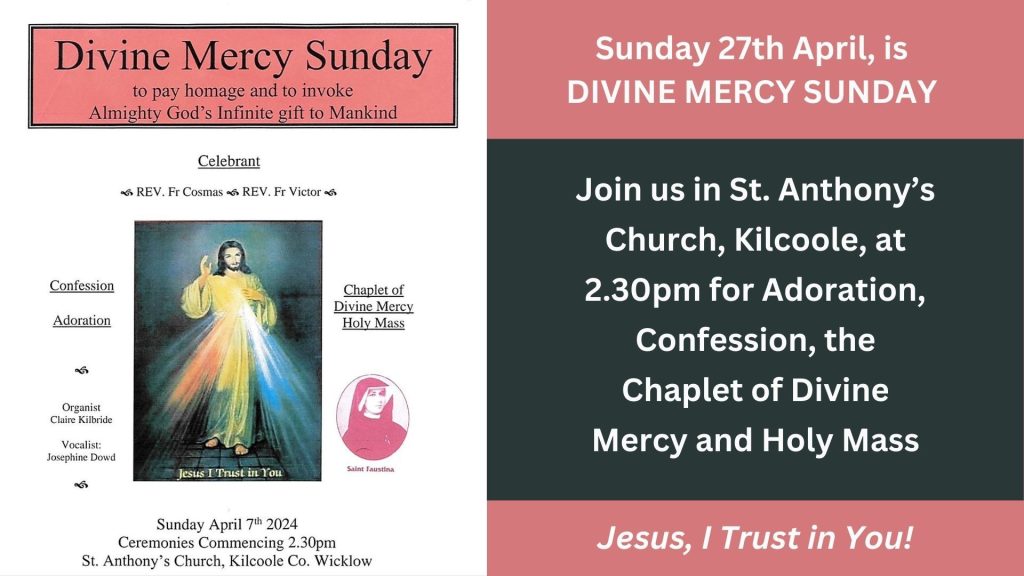The Sunday after Easter, 27th of April, come to St Anthony’s Church, Kilcoole at 2.30pm for Confession, Adoration, The Chaplet of Divine Mercy and Mass, to mark the beautiful feast of Divine Mercy, as instituted by Pope John Paul II on the 30th of April 2000.
This is also the day that Faustina Kowalska was canonised a Saint. She is considered the great Saint of Divine Mercy, as it was Jesus who asked her directly to promote this devotion and to have a feast day of Divine Mercy established on the Sunday after Easter every year.
All are welcome to attend.
The Divine Mercy image is a depiction of Jesus based on a vision that St. Faustina had in 1931. There have been a number of paintings made of this image. The original, though not the most popular one today, is shown above.
A basic explanation of the image is: Jesus is shown in most versions as raising his right hand in blessing, and pointing with his left hand on his chest from which flow forth two rays: one red and one white (translucent).
The depictions often contains the message “Jesus, I trust in You!” (Polish: Jezu ufam Tobie).
The rays streaming out have symbolic meaning: red for the blood of Jesus (which is the Life of Souls), and pale for the water (which justify souls) (from Diary – 299). The whole image is symbolic of charity, forgiveness and love of God, referred to as the “Fountain of Mercy”.
The Chaplet of Divine Mercy is a set of prayers used as part of the Divine Mercy devotion.
They are usually said using a standard set of Rosary beads, often at 3 p.m. (the time of Jesus’ death), but with a different set of prayers than those used in the Marian Rosary.
The Divine Mercy image depicts Jesus at the moment he appears to the disciples in the Upper Room, after the Resurrection, when he empowers them to forgive or retain sins.
This moment is recorded in John 20:19-31, which is the Gospel reading for this Sunday in all three yearly Sunday liturgical cycles (A, B, and C).
This reading is placed on this day because it includes the appearance of Jesus to the Apostle Thomas (in which Jesus invites him to touch his wounds). This event occurred on the eighth day after the Resurrection (John 20:26), and so it is used on the liturgy eight days after Easter.

